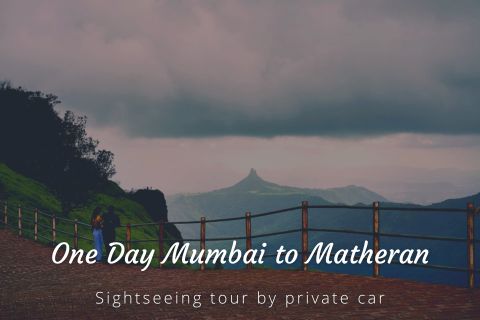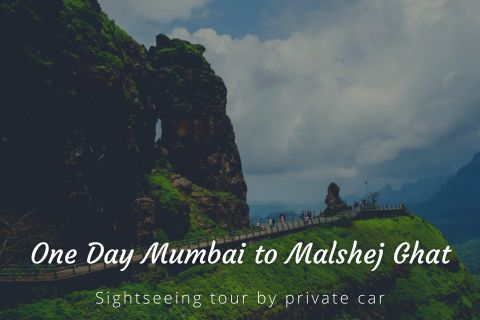
Chhatrapati Shivaji Terminus Mumbai Entry Fee
- No entry fee
Chhatrapati Shivaji Terminus Mumbai Phone
022 2262 2859
Rating:  | 4/5 stars
| 4/5 stars
Based on total 51 reviews
Chhatrapati Shivaji Terminus Mumbai Address: Chhatrapati Shivaji Terminus Area, Fort, Mumbai, Maharashtra, 400001, India
Mumbai City Tour Packages
Chhatrapati Shivaji Terminus Mumbai Timings
| Day | Timing |
|---|---|
| Monday | 12:00 am – 12:00 am |
| Tuesday | 12:00 am – 12:00 am |
| Wednesday | 12:00 am – 12:00 am |
| Thursday | 12:00 am – 12:00 am |
| Friday | 12:00 am – 12:00 am |
| Saturday | 12:00 am – 12:00 am |
| Sunday | 12:00 am – 12:00 am |
Formerly known as the Victoria Terminus (VT) after the then ruling Empress of British India, the Chhatrapati Shivaji Maharaj Terminus is the most extravagant and magnificent gothic revival structures built in Mumbai. It is a must visit place for every visitor who comes to Mumbai. This 133-year-old heritage building is one of the biggest and busiest railway stations of the country apart from being one of the most magnificent and historic landmarks.
Declared as a UNESCO World Heritage Site, the Railway station is the headquarters of the Central Railways and well- connected to all parts of the country. The Victorian- Gothic Revival architecture in which the building is built takes one back to the colonial era and enjoy the marvels of its unique architecture.
The Chhatrapati Shivaji Maharaj Terminus is the second most photographed monument of the country after the Taj Mahal. The monument that bears a little semblance with St. Pancras Railway Station in London, looks incredibly beautiful during the night. The monument is lit up in colourful lights during the night which enhances the beauty and draws most people to photograph it.
The terminus has also been location for quite a few movies that were shot. The best examples being Slumdog Millionaire and Ra One.
History of Chhatrapati Shivaji Terminus Mumbai
The work on building the Victoria Terminus, as CST was called then, had started in 1878 and construction was completed by 1887, almost 10 years from the year the work had started. The station was built to serve as the headquarters of the Great Indian Peninsular Railway, which is present day Central Railway.
The land on which the Chhatrapati Shivaji Maharaj Terminus is built used to be a warehouse for goods meant for import and export to be stored as Bombay, (as the city was known then) was a major and most important port in India. Before the CST was built, it was already home to India’s first railway station namely Bori Bandar. It was in 1853 that India’s first ever passenger train operated from Bori Bunder Station to Thane.
To meet the growing demands of one of the busiest ports of the country, a need of a bigger Railway Station had become the need of the hour. Hence, the idea of building a bigger station cropped up.
Change of Names
The station that was originally called Bori Bunder, terminus of the Great Indian Peninsula Railway from 1853 to 1888, was renamed as Victoria Terminus in celebration of the golden jubilee of Queen Victoria, the Empress of India. However, in 1996, the station was once again renamed after the great Maratha Warrior Emperor, Chhatrapati Shivaji, the founder of the Maratha Empire. It was renamed as Chhatrapati Shivaji Terminus or CST as it is commonly called by the locals now.
In yet another move in December 2016, the ministry passed a resolution to rename the terminus once again to Chhatrapati Shivaji ‘Maharaj’ Terminus and the formal letter of name change was released in May 2017. However, locals still popularly use both the former names, i.e., VT and CST.
2008 Terrorist Attacks
The infamous terrorist attacks in Mumbai that left the city shaken had started from the Chhatrapati Shivaji Terminus. It is learned that on the night of 26th November 2008, the terrorists entered through the passenger waiting hall of CST and opened fire and threw grenades at the commuters for an hour.
There is a memorial built to commemorate the victims of the 2008 attack at the CST building.
Architecture of Chhatrapati Shivaji Terminus Mumbai
The architectural marvel that the Chhatrapati Shivaji Maharaj Terminus is, stands out particularly for its advanced technical and structural solutions where industrial technology has been put together with gothic revival architecture. The final design of the terminus was designed by British architect and engineer, Frederick William Stevens whereas its watercolour sketch was done by draughtsman, Axel Haig.
The principle architectural style in which the Chhatrapati Shivaji Maharaj Terminus was built is Victorian-Gothic Revival style of architecture. It had additions of Indian classical as well as Italian elements to it. The influences of the Indian classical elements can be seen in the arches, skyline, ground plan and turrets. The work on the tiles, wood carvings, metal iron & brass linings, stairway railings, grills of ticket houses were done by the students of Sir J. J. School of Arts.
The central dome, built without any centering, has got dovetail ribs with office structure connected to 330 feet long platform that leads to a 1200 feet long train shed. The way in which the entire dome was designed and planned is considered to be a unique feat of 19th century engineering and architecture. Being the focal point of the entire structure, the high central dome is an octagonal ribbed structure with a statue of a female holding a torch in her right hand pointing upwards and her left hand holding a spoked wheel. Apparently, the statue symbolizes progress.
The entrance gate columns have lions on either side that represent Great Britain and that of a tiger that represents India. The exterior structure is made of Sandstone, Marble and Limestone. Apart from the exteriors, the interiors are also decorated in great style, which include the floors, the high ceilings, the stone arches, and the walls of the interiors that were lined with glazed tiles manufactured by Maw & Co of Britain.
When it comes to mentioning the platforms, there are a total of 18 platforms in CST. 7 out of 18 are used for suburban trains and the rest of the 11 are for long distance trains. The terminus also houses AC dormitories or waiting rooms that have 20 beds for females and 58 beds for males.
Image Gallery of Chhatrapati Shivaji Terminus Mumbai
Heritage Tour of Chhatrapati Shivaji Terminus Mumbai
The guided heritage tour inside the CST heritage museum is organized from Monday through Saturday. The tour is a one hour guided tour beginning at the heritage gallery on the ground floor. The heritage tour is all about the history of Indian Railways including a model of the locomotive used as the first train that operated between Bori Bunder and Thane in 1853.
The exhibits include a display of all erstwhile logos of all former Railways since every Railway line was a part of a separate individual unit, owned by a separate firm. In 1951, all units were brought together and named Indian Railways thereby making them a part of one single nationalised entity under the Government of India.
There is a wooden cash box with metal reinforcements that was used in the Grand Indian Peninsula (GIP) Railway. Also, on display is the grandfather clock, the pendulum of which needs to be rewind manually every week. The clock was made by John Walker & Co. of London.
The grand staircase has a stone lion at the foot that holds the coat of arms of the GIP Railway. The stairs of the grand staircase are made out of black stone that appear almost like a newly constructed one, lined by wrought iron balustrades that give an impeccable look to the entire staircase.
The high ceiling and arches of the central dome from the staircase looks equally extraordinary as the star chamber on the north wing of the ground floor does. The star chamber presently accommodates the ticketing counters.
The heritage tour of the Chhatrapati Shivaji Maharaj Terminus museum is a highly recommended one for every visitor.
Entry Fees and Timings of Chhatrapati Shivaji Terminus Mumbai
Being the hub for Central Railways and a major junction, Chhatrapati Shivaji Maharaj Terminus is open 24/7 all 365 days a year.
There is no entry fee to enter the terminus.
Places to visit near Chhatrapati Shivaji Terminus Mumbai
Gateway of India, Taj Mahal Palace Hotel, Fashion Street, Colaba Causeway, Marine Drive, Chowpatty Beach, Taraporewala Aquarium, Malabar Hill, National Gallery of Modern Art, RBI Monetary Museum, Bombay High Court, Ballard Bunder Gatehouse, Cowasji Jehangir Hall, Institute of Contemporary Indian Arts and Asiatic Society of Mumbai Town Hall are located nearby.
How to Reach Chhatrapati Shivaji Terminus Mumbai
Chhatrapati Shivaji Maharaj Terminus being a landmark in itself, makes it easy for the visitors to reach. From around the city, every local suburban train as well as a lot many long distance trains stop here.
When coming by road, the terminus is reachable via NH 2, NH 3, NH 4, NH 8, NH 17 and NH 22 depending on which way one is driving from.
Also, within the city, intercity buses that are also called BEST buses ply to CST. Taxis and Rental cabs from top car rental companies in Mumbai are another means of transportation that one can use to reach CST.
To have the perfect time of your life, you can book an all-inclusive Mumbai tour package with Mumbai Tourism, a division of Holidays DNA. Suiting to your holiday preferences and budget requirements, we offer a wide variety of travel packages that allows you to explore the popular sightseeing places of Mumbai on your city tour. Please fill the Contact Us form to know more about our offerings.




